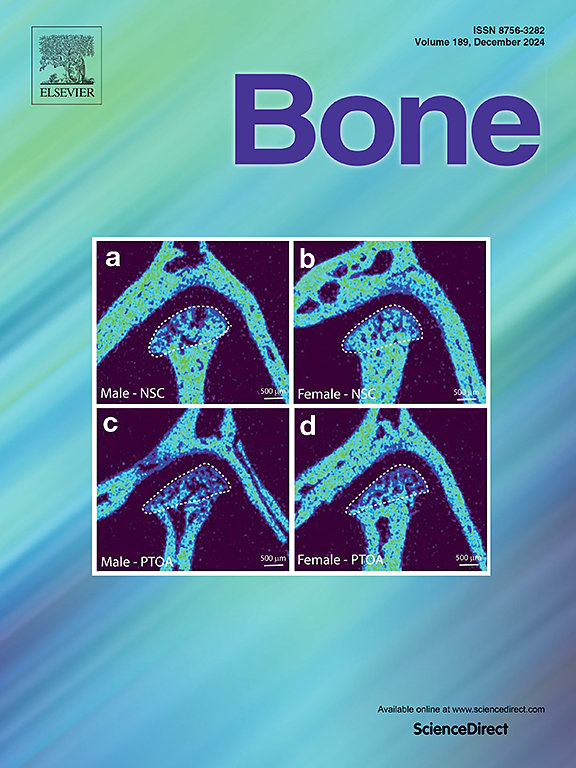Oral versus intravenous antibiotics for bone and joint infections: Systematic review and meta-analysis of randomized controlled trials
IF 3.6
2区 医学
Q2 ENDOCRINOLOGY & METABOLISM
引用次数: 0
Abstract
Background
Recent trials suggest oral (PO) antibiotics may be as effective as prolonged intravenous (IV) regimens in specific clinical scenarios. This meta-analysis compared PO and IV antibiotic therapy in bone and joint infections.
Materials and methods
PubMed, Embase and CENTRAL databases were searched for published trials from inception until February 2025 for randomized clinical trials (RCTs) that enrolled patients of any age with confirmed bone and/or joint infections compared oral versus intravenous antibiotic therapy and reported at least one of the prespecified outcomes.
Results
Nine RCTs (1723 patients) published from 1987 to 2025 were included. PO and IV therapies showed comparable efficacy in treatment failure (RR 0.96; 95 % CI 0.78–1.17; p = 0.68; I2 = 0 %) and adverse events (RR 1.00; 95 % CI 0.90–1.12; I2 = 10 %; p = 0.94). Overall, recurrence rates were similar. However, a subgroup analysis excluding fracture-related infections favored IV therapy (RR 1.47; 95 % CI 1.08–2.02; I2 = 0 %; p = 0.02). Superinfection rates showed no difference (RR 1.12; 95 % CI 0.32–3.98; I2 = 0 %; p = 0.86). Although not statistically significant, hospitalization duration may be shorter with PO therapy (MD -5.03 days; 95 % CI -15.84–5.77; I2 = 4 %; p = 0.36).
Conclusion
Appropriately selected PO antibiotic regimens demonstrate comparable efficacy and safety to IV therapy in bone and joint infections, although there is a slight tendency to increase the recurrence of infections. These findings support a shift toward oral therapy in carefully chosen patients.

口服与静脉注射抗生素治疗骨和关节感染:随机对照试验的系统回顾和荟萃分析
最近的试验表明,在特定的临床情况下,口服(PO)抗生素可能与长时间静脉注射(IV)方案一样有效。这项荟萃分析比较了骨和关节感染的静脉注射和口服抗生素治疗。材料和方法检索spubmed、Embase和CENTRAL数据库,检索从成立到2025年2月已发表的随机临床试验(rct),这些随机临床试验(rct)招募任何年龄的确诊骨和/或关节感染的患者,比较口服和静脉抗生素治疗,并报告至少一种预先指定的结果。结果纳入1987 ~ 2025年发表的9篇随机对照试验(rct),共1723例患者。PO和IV治疗失败的疗效相当(RR 0.96;95% ci 0.78-1.17;p = 0.68;I2 = 0%)和不良事件(RR 1.00;95% ci 0.90-1.12;i2 = 10%;p = 0.94)。总体而言,复发率相似。然而,排除骨折相关感染的亚组分析倾向于静脉注射治疗(RR 1.47;95% ci 1.08-2.02;i2 = 0%;p = 0.02)。重复感染率差异无统计学意义(RR 1.12;95% ci 0.32-3.98;i2 = 0%;p = 0.86)。虽然没有统计学意义,但PO治疗的住院时间可能更短(MD -5.03天;95% ci -15.84-5.77;i2 = 4%;p = 0.36)。结论适当选择PO抗生素治疗骨关节感染的疗效和安全性与静脉注射相当,但有轻微增加感染复发的趋势。这些发现支持在精心挑选的患者中转向口服治疗。
本文章由计算机程序翻译,如有差异,请以英文原文为准。
求助全文
约1分钟内获得全文
求助全文
来源期刊

Bone
医学-内分泌学与代谢
CiteScore
8.90
自引率
4.90%
发文量
264
审稿时长
30 days
期刊介绍:
BONE is an interdisciplinary forum for the rapid publication of original articles and reviews on basic, translational, and clinical aspects of bone and mineral metabolism. The Journal also encourages submissions related to interactions of bone with other organ systems, including cartilage, endocrine, muscle, fat, neural, vascular, gastrointestinal, hematopoietic, and immune systems. Particular attention is placed on the application of experimental studies to clinical practice.
 求助内容:
求助内容: 应助结果提醒方式:
应助结果提醒方式:


